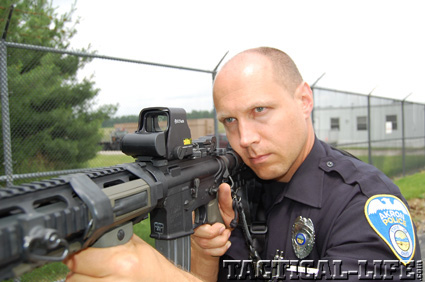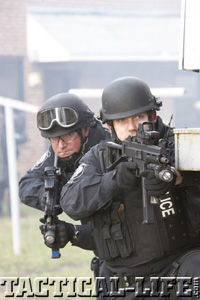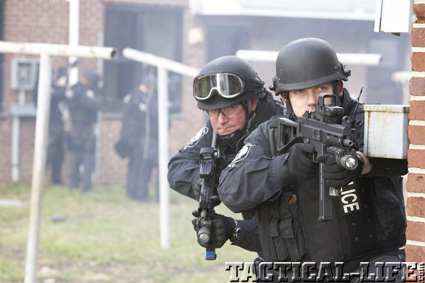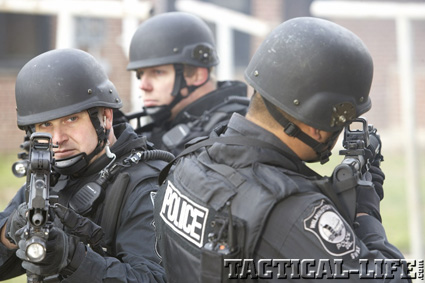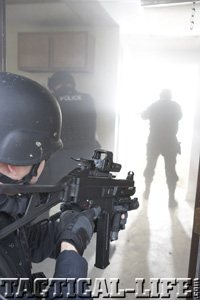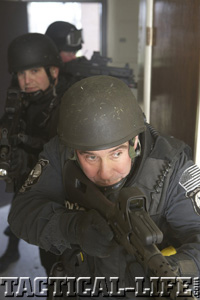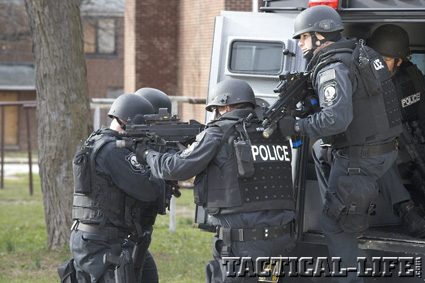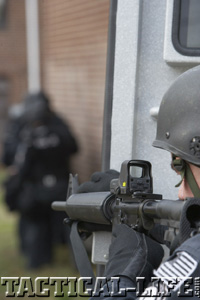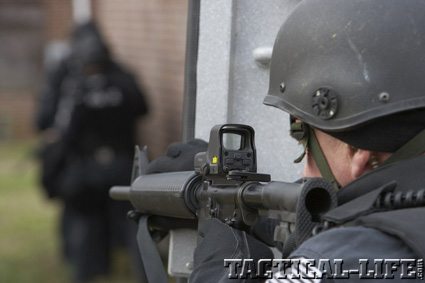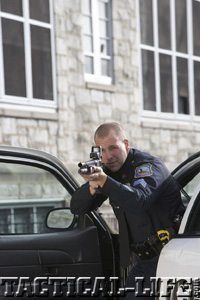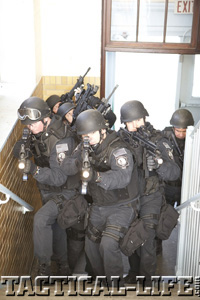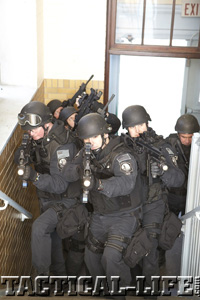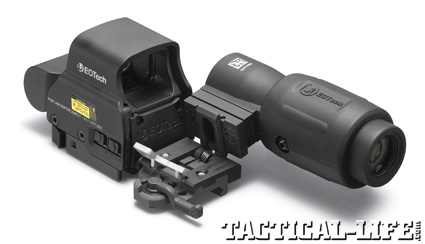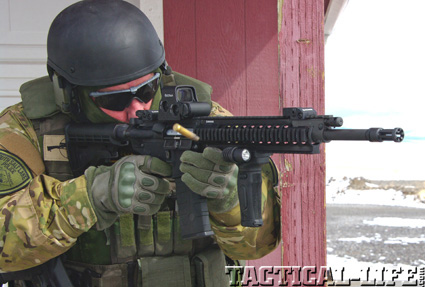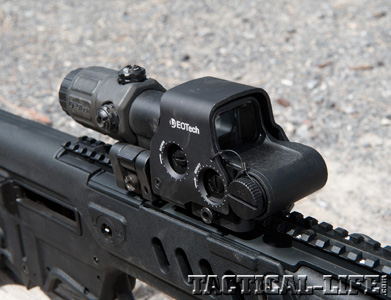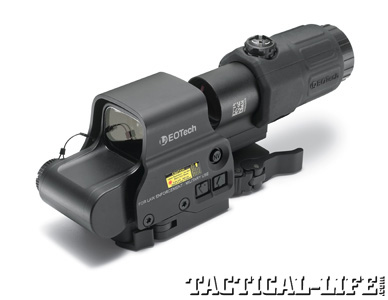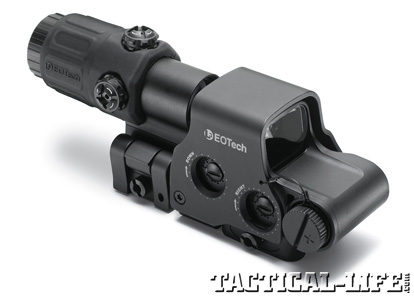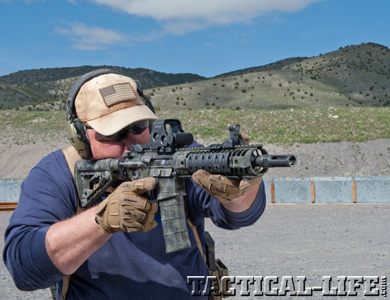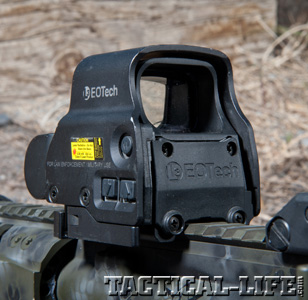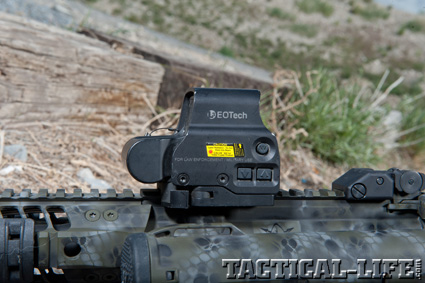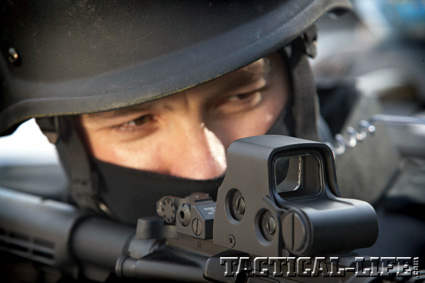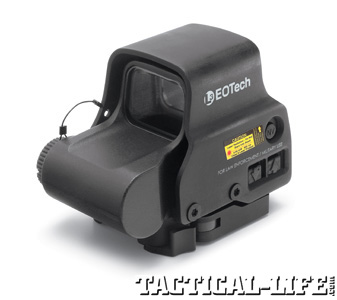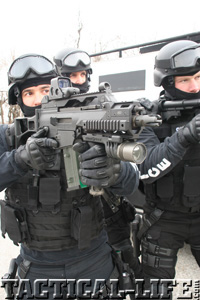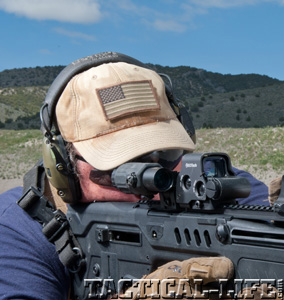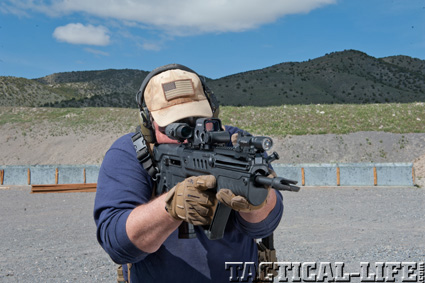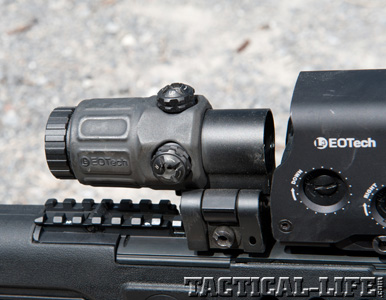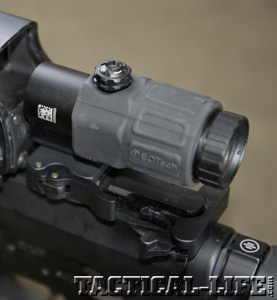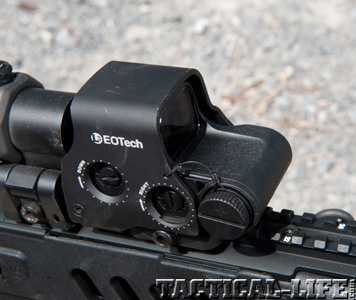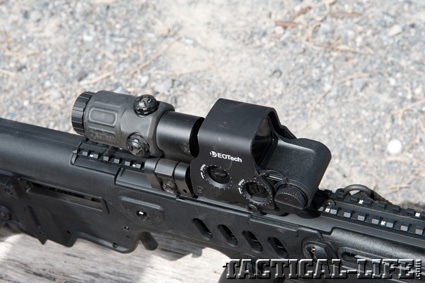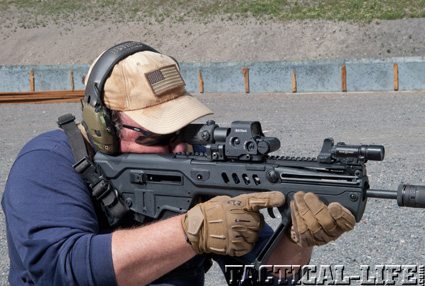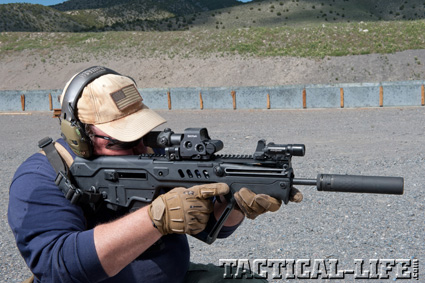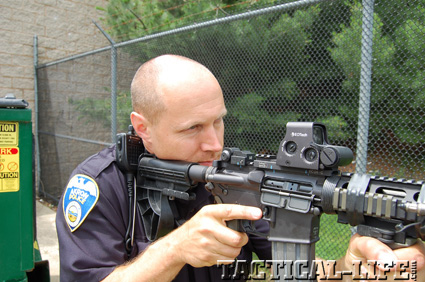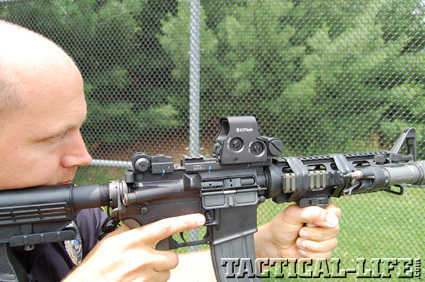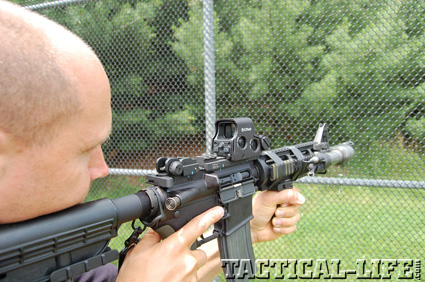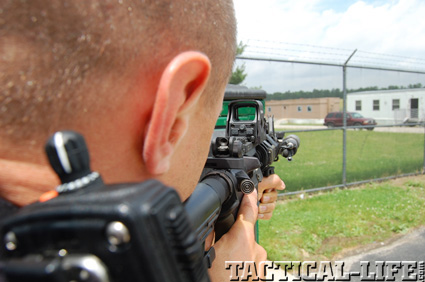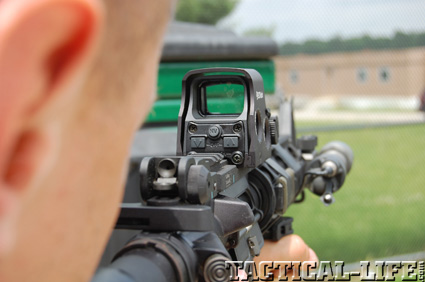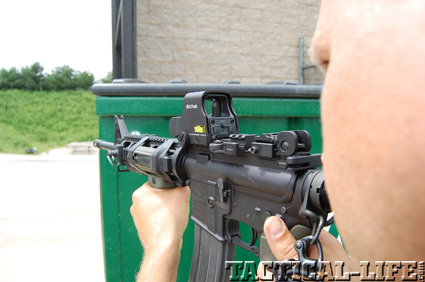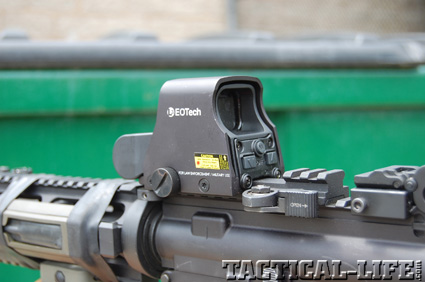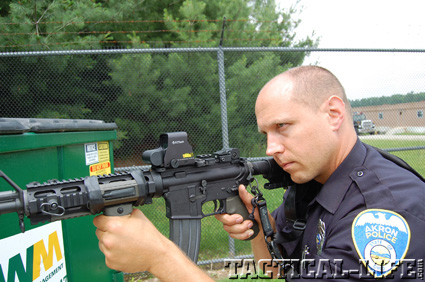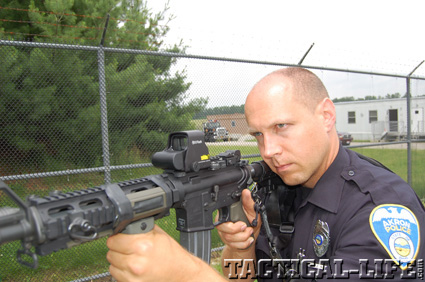There are two basic categories of weapon sights available these days, the most prolific being a red dot or optic made to withstand occasional range use, target practice or competition. The second category is designed specifically for deployment. Combat optics are built to survive the harshest conditions and real-world use. Most are pretty simple, as complication in combat is less than desirable. The most common is a red dot or similar, and EOTech’s holographic weapon sights (HWS) are the favorite of many.
Comparing the police and military world is popular these days—it sells equipment and training. The truth is that they are more different than similar. Not only are the manner and methods of operation different, but so are the rules of engagement. However, some things, such as equipment, cross over because of their basic application. Red-dot or holographic sights are one such category, as they are fantastic for CQB uses. When dedicated to close-quarters use, a red dot remains my preference. Patrol officers require a bit more flexibility, though. That environment is better served by a reticle with a few more aiming options, and EOTech HWS units fit this bill perfectly.
These sights are popular among LEOs, which is confirmed by the large number of the units produced and sold. A wide variety of models means that there are sights for most budgets and operational conditions. Various battery options and configurations can accommodate magnifiers, lasers and other equipment, fitting just about any law enforcement need.
Advertisement — Continue Reading Below
Holo How-Tos
An EOTech sight is not a red dot. It does not “project” a dot, which is one of its advantages—it projects nothing forward of the shooter, even in night-vision modes. Looking at the sight from the front, you cannot pick up a red hue or a projection of any kind. There is no need for lens coatings or diffusers to prevent glare. The reticle in the EOTech is a holographic image visible only to the operator. It is a heads-up display (HUD) that remains in place whether covered with mud, debris or obscured by a shattered screen. So long as you can see through any part of the HUD, you will be able to use the entire reticle with no change in impact. This provides for a versatile reticle that equates to more options for the shooter.
So how do you use it? Even experienced trainers will treat it like a red dot with a big reticle. While that works, it limits the capabilities of the sight. Most people “put the dot on the target” when using a red dot. It is used as a single-point sight, keeping the shooter “sight focused.”
Advertisement — Continue Reading Below
Much training remains sight-focused without regard to the aiming device. This method encourages accuracy and precision—not necessarily fast target acquisition or reality outside the range. Over the course of the last 20-plus years, most officers I have investigated or interviewed after a shooting knew where the sights were, but they focused on the threat. Several had no idea where the sights were. Focusing on the person trying to kill you is natural. Training may change this, but it’s not always a rule—especially given the typical limited officer training. Reprogramming millennia of survival instincts is not simple and can be counterproductive. I prefer to focus on the threat and know where my aiming device is—a condition perfectly suited to survival and the use of an EOTech.
With red-dot sights, the most common error is making the dot too bright. When focused on the dot, you want it to be clear. Too much brightness, and it turns into a star or sparkle. Do this with an EOTech and the error is magnified. It is designed to be superimposed over the threat, not pointed at it. Your reticle should look opaque, not solid. You should almost see through the reticle while focused on the threat.
Pointing the sight at the ground in your area of operation, adjust the intensity so it is clear but you can still see through it. If the operational environment is both indoors and out, adjust it for outdoors. It will be bright indoors, but you will see it easily. Pressing either the up or down arrow turns it on at level 12, about halfway through the adjustments and generally about right for outdoor use.
Advertisement — Continue Reading Below
If night vision is used, pressing the “NV” button turns it on, and the arrows adjust intensity through 10 night-vision settings. Push the NV button again, and the reticle goes back into normal mode at the last setting used. You can toggle back and forth by pressing the NV button. The auto shutoff kicks on depending on operating mode from four to eight hours. Pressing both arrow buttons at the same time shuts the sight off. It is really simple to use, and if done correctly, it’s one of the best sighting systems you can put on your rifle.
Options for All
Differences between the EOTech sights revolve around battery type, the holographic reticle and the location of the sight’s operating controls. It all depends on what you need and what you can spend. If you’re looking for a magnifier, consider an EPS or EXPS, which utilize side-actuated controls. Adding a G33.STS 3X magnifier will help you with engagements from 100 yards out. The 1-MOA center dot allows for precision without obscuring the target. The G33.STS can also be moved out of the way for close work or removed completely when it’s not needed.
Advertisement — Continue Reading Below
Run times for the sights range from 600 to 1,000 hours of continuous use on setting 12 whether AA or CR123 lithium batteries are used. With the auto shutoff and regular battery protocols, it will last years. It depends on your operation schedule, but I change out my batteries every six months. The units that utilize CR123 batteries are considerably smaller, allowing for more rail space. Everything on my gun uses the same batteries, so that may be a consideration.
If you will never use night vision, save your money and stick sights like the XPS2 models, which aren’t night-vision compatible. Night-vision compatibility is great, but most cops will never have it or use it. SWAT team members may want to spend the extra money “just in case” they get some night-vision gear later on, but for most patrol officers, it is just not needed.
Several reticles are offered; choose the one that meets your needs. Mine all use the ring and two dots. One dot is sighted in at 100 yards, while the other dot is great for CQB distances where precision is needed. Otherwise, I place the circle over the threat, centered for CQB. It is incredibly fast, avoids tunnel vision and remains very accurate. The outer ring can be used for ranging, wind holds or various aiming points. Several other reticles are dedicated to different chamberings or even less-lethal weapons systems. Just keep it simple. It will make for easier use under stress.
Advertisement — Continue Reading Below
Many Missions
Arguments abound as to the “best” sight for duty use. They are tools, and each has its strengths and weaknesses. EOTech HWS units are excellent tools proven in use by law enforcement and the military since their introduction. In fact, EXPS3-2 sights sit atop both my 300 BLK and 5.56mm deployment rifles to this day.
As a testament to its enduring popularity, EOTech has recently produced its millionth HWS. To promote this amazing accomplishment, EOTech has been taking the 1 millionth sight around the world and is asking fans to “like” the EOTech Facebook page, watch the video and register to guess where the sight is that week for a chance to win a prize. The contest will run through the end of 2013 and will award EOTech products as well as one $10,000 Grand Prize package. For more information on EOTech’s products, visit eotech-inc.com or call 734-741-8868.
